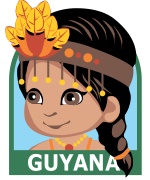Evolution is the development of life on Earth. This is a process that began billions of years ago and is still continuing to this day. Evolution tells us how it was possible for the enormous diversity of life to develop. It shows us how primitive Protozoa could become the millions of different species that we see today. Evolution, then, is the answer to the question that we have all asked on seeing a Daschund and a Great Dane together:
how is it possible for ancestors to have descendants that look so very different to them? In answering this question, we want to focus on animals, excluding other forms of life such as fungi and plants. The first question to ask is therefore: how can one animal develop into a whole new species of animal? Ah, but just a quick question: what exactly is a species?
A species is a community of animals that is capable of producing offspring with one another, with those offspring also being capable of reproducing in turn. To understand this answer better, we need to take a closer look at the following points: the uniqueness of living creatures, guaranteed through the excess production of offspring and heredity, and as a second key point, selection. Let's begin with uniqueness. Every creature that exists is unique, and this is essential for evolution. The members of a species may strongly resemble each other in appearance; however, they all have slightly different traits and characteristics. They may be a bit bigger, fatter, stronger, or bolder than their fellow animals.
So, what is the reason for these differences? Let's take a closer look at a creature. Every creature is made up of cells. These cells have a nucleus. The nucleus contains the chromosomes, and the chromosomes hold the DNA. DNA consists of different genes, and it's these genes that are life's information carriers. They contain instructions and orders for the cells, and determine the characteristics and traits that living creatures have, and it's precisely this DNA that is unique to every creature. It's slightly different from individual to individual, which is why each has slightly different characteristics.
But how is the enormous range of DNA created?
One key factor is the excess production of offspring. In nature, we can observe that creatures generally produce far more offspring than is necessary for the survival of their species, with many offspring dying an early death as a result. Often there are even more offspring than the environment in which they live is able to support. This is one factor in increasing diversity within a species. The more offspring that are produced, the more little differences occur, and this is what nature wants: as many little differences as possible.
The second major cause of the uniqueness of individuals occurs in heredity itself. By the way, heredity means the passing on of DNA to offspring. Two very interesting factors come into play in this process: recombination and mutation. Recombination is the random mixing of the DNA of two creatures. When two creatures fall in love and mate, they recombine their genes twice. The first time, they do this separately when they generate the gametes - that is, sperm and egg cells. The gametes take half of the genes and shuffle them.
The second recombination occurs when a male inseminates a female. The parents each provide 50% of their DNA, in other words, 50% of their unique traits and characteristics. These are then recombined, or mixed, and the result is new offspring. These offspring have a random mix of the DNA, and therefore the traits and characteristics of their parents. This increases the diversity and differences within a species even further, but mutations are also important for evolution. Mutations are random changes in DNA.
These can also be described as copying errors within the DNA, triggered by toxins or other chemical substances, or by radiation. A mutation exists when part of the DNA is altered. These changes are often negative, and may result in illnesses such as cancer. However, they may also have neutral or positive effects, such as the blue eye colour in humans, which is one such random mutation. In all cases, a mutation has to affect a gamete, that is a sperm or egg cell, because only the DNA in the gametes is passed on to the offspring. This is also the reason why we protect our sexual organs during x-rays, whilst other parts of the body are not at risk.
In summary then, in the heredity process, creatures pass on their characteristics to their offspring in the form of DNA. Recombination and mutation change the DNA so that each child looks different to its siblings, and receives a random mix of the characteristics of its parents. There's a key word here: random. All of these processes are based on chance. Random recombination and mutations result in individuals with random mixes of traits and characteristics, which in turn mix these randomly, and pass them on.
But how can so much be down to chance, when all living creatures are so perfectly adapted to their environment, for example, the stick insect, the hummingbird, and the frogfish? The answer is provided by the second key point: selection. Each individual is subjected to a process of natural selection. As we have learned, each individual is somewhat different to its fellows, and there is extensive variation within a species.
Environmental influences have an effect on living creatures. These so-called selection factors include: predators, parasites, animals of the same species, toxins, changes in habitat, or the climate. Selection is a process that each individual is subjected to. Every creature has a unique mix of traits and characteristics. This mix helps them to survive in their environment, or not, as the case may be. Anyone with an unsuitable mix will be selected from the environment.
Those with the right mix survive, and can pass on their enhanced traits and characteristics. This is why diversity is so important. This is why creatures make so much effort to produce offspring that are as different as possible. They increase the likelihood that at least one of their offspring passes nature's selection process. They maximize their chances of survival. A good example of this can be seen in a group of finches living on a remote island. They are some of the most famous animals in the world of science, and are known as Darwin finches, after their discoverer, Charles Darwin, and this is the story of those finches.
A few hundred years ago, a small group of finches was blown onto the Galapagos Islands in the middle of the Pacific, probably by a big storm. The finches found themselves in an environment that was completely new to them, a real finch paradise: an abundance of food and no predators. They reproduced rapidly and numerously. The islands were soon heaving with finches. This meant that food supplies became increasingly scarce. The finch paradise was threatened with famine, and finch friends became competitors. This is when selection intervened.
Their individuality and small differences, in this case their slightly different beaks, meant that some of the birds were able to avoid competing with their fellow finches. The beaks of some of the finches were more suitable for digging for worms. Other finches were able to use their beaks better for cracking seeds. The finches consequently sort out ecological niches. In these niches, they were safe from excessive competition. They soon began to mate primarily with other finches that used the same niche. Over the course of many generations, these characteristics were enhanced, enabling the finches to exploit their niches successfully.
The differences between the worm-diggers and the seed-crackers became so large that they were no longer able to mate with one another. Different species emerged as a result. Today, there are 14 different species of finch living on the Galapagos Islands, all of which are descended from the same group of stranded finches. This is how new species are created by evolution: through the interaction of unique individuals, the excess production of offspring, recombination and mutation in heredity, and finally, through selection.
Why is this so important?
It tells us where the variety of life comes from, and why living creatures are so perfectly adapted to their habitats. But it also effects us personally. Every person is the result of 3.5 billion years of evolution, and that includes you. Your ancestors fought and adapted in order to survive. This survival was an extremely uncertain thing. If we consider the fact that 99% of all the species that have ever lived are extinct, then you can consider yourself part of a success story. The dinosaurs have disappeared, but you are alive, watching this video, because you're incredibly special, just like all the other creatures that exist today: irreproducible and unique in the universe.






















No comments:
Post a Comment